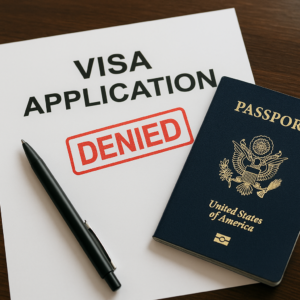One your fiance arrives in the United States on a K-1 visa and you are married within ninety (90) days upon arrival, you and your fiance will need to file for adjustment of status with the United States Citizenship and Immigration Services (“USCIS”) in order to convert the K-1 fiance nonimmigrant visa status to lawful permanent resident status.
As part of the adjustment process, applicants have the option of filing a Form I-131, Application for Travel Documents, Parole Documents, and Arrival/ Departure Records with their Form I-485, Application to Register Permanent Residence or Adjust Status. Approval of the Form I-131 will result in Advance Parole allowing for international travel while waiting for USCIS to approve the Form I-485.
Applicants also have the option to file a Form I-765, Application for Employment Authorization (“EAD”) while USCIS adjudicates the adjustment application. Once the EAD is approved, they will have valid status and allowed to work until USCIS issues a decision on the Form I-485 Application. Upon receiving an approval of the Form I-485 from USCIS and being issued lawful permanent resident status, the EAD will become obsolete and no further action is needed to seek employment.
While the EAD can be filed separately, it is advisable to submit it concurrently with Form I-485.
For more information on filing an EAD following marriage to a U.S. citizen after arriving on a K-1 visa, contact us at info@enterlinepartners.com.
ENTERLINE & PARTNERS CONSULTING
Ho Chi Minh City, Vietnam Office
146C7 Nguyen Van Huong St, Thao Dien Ward,
District 2, Thu Duc City
Ho Chi Minh City, Vietnam
Tel: +84 933 301 488
Email: info@enterlinepartners.com
Facebook: Enterline & Partners – Dịch vụ Thị thực và Định cư Hoa Kỳ
YouTube: @EnterlineAndPartnersConsulting
Website: http://enterlinepartners.com
Manila, Philippines Office
LKG Tower 37th Floor
6801 Ayala Avenue
Makati City, Philippines 1226
Tel: +63 917 543 7926
Email: info@enterlinepartners.com
Facebook: Enterline and Partners Philippines
Website: https://enterlinepartners.com/language/en/welcome/
Copyright 2025. This article is for information purposes only and does not constitute legal advice. This article may be changed with or without notice. The opinions expressed in this article are those of Enterline & Partners only.








